[ED: John Moses Browning was born on this day in 1865. How many Browning designs do you own?]
Mention the name “John Moses Browning” to knowledgeable American gun owners and their usual reaction is profound respect and great appreciation. This is for good reason: though he died over 90 years ago, John Browning either created or influenced the design of many of the most iconic pistols, lever-action rifles, semi-automatic shotguns, and machine guns in use today.
The guns most often associated with John M. Browning are the famed Winchester lever-action guns that “won the west,” the ubiquitous Colt 1911 automatic pistol, and U.S. military machine guns such as the celebrated .50 caliber M2 “Ma Deuce,” the .30 caliber M1919 medium machine gun, and the .30 caliber M1918 BAR automatic rifle.
Indeed, with regard to the latter machine guns, every American owes Mr. Browning a huge debt of gratitude, since it was Browning’s firearms designs that helped carry the American military to victory in two World Wars and Korea. So great are his contributions to the security of this nation, that John Moses Browning undoubtedly deserves his own Mt. Rushmore or at least a memorial in Washington, DC.
Despite his considerable fame and recognition, there is another facet of Browning’s life that is less well-known to American gun owners, yet critically important. That story involves Mr. Browning’s intricate and prolific relationship with an upstart Belgian arms factory now known as Fabrique Nationale Herstal (a.k.a. “FN Herstal” or simply “FN”).
The partnership between Mr. Browning and FN began in 1897 and has continued long past Browning’s death in 1926 to today. That partnership has had profound impacts for both FN and Mr. Browning, influencing firearms history for years to come.
For its part, FN would make John Browning’s gun designs come to life on both American shores and abroad. Conversely, those same designs secured FN’s future as a manufacturer and positioned the company as a major player in the military small arms market, ensuring immortality for Mr. Browning’s vision.
It’s not overstating matters to say that together, FN and John Browning shaped the course of development of modern small arms in ways that are still being manifested in today’s gun designs.
The Browning/FN story began in 1886 in the blue-collar industrial town of Herstal, Belgium, a suburb of Liege. Located in the Meuse Valley, the Liege region had long been one of the world’s premier arms making centers.
The region was rich in coal, iron, and water, all essential to the manufacture of small arms. The political and economic climate of the time ensured the arms industry enjoyed an unprecedented period of economic prosperity. As foreign nations began to ramp up their orders, they began demanding shorter and shorter delivery terms.
To remain competitive against German factories like the Loewe group and the Mauser and Steyr Waffenwerke, several firms in the region set up a joint association called Les Fabricants d’Armes Reunis. This organization was to pave the way for the creation of Fabrique Nationale d’Armes de Guerre.
In 1887, the Belgian government wanted to replace 150,000 of its military regulation rifles and decided not to buy them abroad. This piqued the interest of Les Fabricants d’Armes Reunis and they began exploring how to set up an arms factory large enough to meet this production requirement. This would require tremendous resources. So they set out to lobby their three competitors to see if they would be willing to join forces.
They did, and after much negotiation, 12 firms – including those that were part of Les Fabricants d’Armes Reunis – banded together to form Fabrique Nationale D’Armes de Guerre (“National Factory for Arms of War”). Freshly infused with capital, FN built their state-of-the-art production facility in Herstal and inked the deal with the Belgian government to produce 150,000 Mauser rifles for 79 francs per firearm.
FN cranked out that initial order of Mausers in a mere five years. Other orders from foreign governments and for ammunition followed. FN’s success did not thrill the Waffenfabrik Mauser, who in 1894, sued FN over patent infringement of its Spanish Mauser model. After protracted litigation, FN lost and forfeited the patent. As a result, several directors resigned and Ludwig Loewe and Co. became the majority shareholder of FN.
Thus began a new era of German control in FN’s history, which was technologically and financially beneficial to a degree. Unfortunately, Loewe also redirected military small contracts away from Liege to its German factories in Berlin and Oberndorf, as well as to Steyr. These restrictions forced FN to seek ways to keep its Liege factory alive. Soon, they were building other products such as automobiles, motorcycles, bicycles and sporting arms.
The first product the Liege factory considered was the bicycle and in May 1898, the company invented and began production of the “FN chainless.” As part of that diversification effort, FN sent an American-born employee named Hart O. Berg to the United States to learn about innovations made in the manufacturing of bicycles. Berg was a native of Hartford, Connecticut, which coincidentally was the home of the Colt factory.
Whether by happenstance or by design, Berg met John M. Browning in Hartford, who was in town making one of his regular visits to Colt. Berg wasted no time in explaining to Browning that FN had a huge underutilized state-of-the-art factory along with an employee base of highly skilled gunsmiths and artisans. He further explained that two things that FN lacked were an in-house marquis designer (hint-hint) and some blueprints for the next generation of firearms.
As it turned out, John Browning’s situation was complimentary to FN’s plight. Browning was a prolific gun designer with a myriad of patents and an endless stream of ideas. But Browning didn’t have a modern factory staffed with machinists and gunsmiths capable of turning his visions into reality. Certainly, he could – and did – sell his designs to Winchester and Colt, among others, but there was never that perfect seamless inventor-manufacturer partnership he had always sought.
One primary problem: the American firms would buy Browning’s patents in large part to keep other firms from getting them. To compound matters, Winchester and Colt had worked out a deal not to step on each other’s turf: Winchester would make rifles and Colt would focus on pistols. As a result, Browning needed a factory to build his semi-automatic pistol designs: although Colt had bought rights for U.S. production to some of Browning’s previous pistol designs on a royalty basis, Colt had opted not to put them into production.
With the potential for a match seemingly made in heaven, Messrs. Browning and Berg struck up a friendship. As Browning would later recount, his first thought was, “Think of it – a new gun factory with nothing to make!” He told his brother Matthew, “I’ll give them something that will set their wheels in motion.” Indeed, Berg returned to Belgium in June of 1897 with a prototype of a small .32 ACP (7.65x17mm) caliber automatic pistol (the future FN Browning Model 1899).

FN tested the prototype, and was pleasantly surprised to find the little pistol could fire 500 rounds without a single malfunction. This feat was unprecedented for that time. FN was quick to spot a good thing, and immediately signed a production contract on July 17, 1897.
The Model 1899, known as the “Pistolete Browning,” would be the first handgun ever produced by FN. The firm was so anxious to get the rights to the pistol that it agreed to pay Browning a royalty of two Francs per gun on top of the initial payment of $2,000. The royalty represented 7% of the retail price of the pistol, which was 30 Francs. Browning had never before received royalties from Winchester or Colt, and therefore, this new arrangement with FN met with Browning’s enthusiastic approval.
The diminutive Model 1899 and its upgraded version, the Model 1900, would make John Browning a very wealthy man. Indeed, FN sold the Browning 1900 like proverbial hotcakes (or Belgian waffles?), and “Browning” became a household name in Europe.
Total production numbers for the Model 1899 was around 10,900, while FN produced 724,550 units of the Model 1900. For their part, the citizens of Herstal viewed Monsieur Browning as a kind of savior, because the factory making his pistol brought their city some measure of prosperity, and a newfound sense of hope.
Still, FN had not yet earned first position in Mr. Browning’s rolodex. That would change in 1902, however. Three years prior, in March of 1899, Browning had finally worked out the bugs of one his most challenging designs: the “Auto-5” shotgun. At the time, Winchester was John Browning’s preferred factory for long guns. So when it came time to sell his design for the Auto-5, Browning gave Winchester first dibs.
John Browning was largely responsible for Winchester having a near-monopoly on the sporting rifle market in the United States, so one might assume that Winchester President Thomas G. Bennett would have treated Browning like the star he was. But Bennett was too proud for that. He resented that he had to pay Browning the equivalent of hush money for his patents, even though Winchester had no intention of producing many of the designs. So Bennett sat on the new shotgun design for three years.
By January of 1902, John Browning had had enough of that nonsense. Browning showed up at New Haven intent on telling Bennett to either purchase the Auto-5 design or release it to be sold to another gunmaker.
The meeting between Browning and T.G. Bennett lasted about five tense minutes. Needless to say, both men were in a tough spot. The Auto-5 shotgun, innovative as it was, was unproven, and it was unclear how the public would receive it. Furthermore, even if it was a success, it would cut into the sales of the Winchester Model 1897. Finally, Winchester never paid royalties to anybody, and to break that tradition would set bad precedent. Bennett thought he had to draw a line in the sand on royalties.
That was a big mistake. Browning grabbed his prototypes and left, never to return to New Haven.
John Browning’s next stop was Ilion, New York. On January 8, 1902, Browning called Remington’s president Marcellus Hartley. Hartley agreed to see him later that afternoon. Unfortunately, Mr. Hartley died of a heart attack minutes before their meeting. The matter had been decided: FN would get the next crack at producing the Auto-5 shotgun.

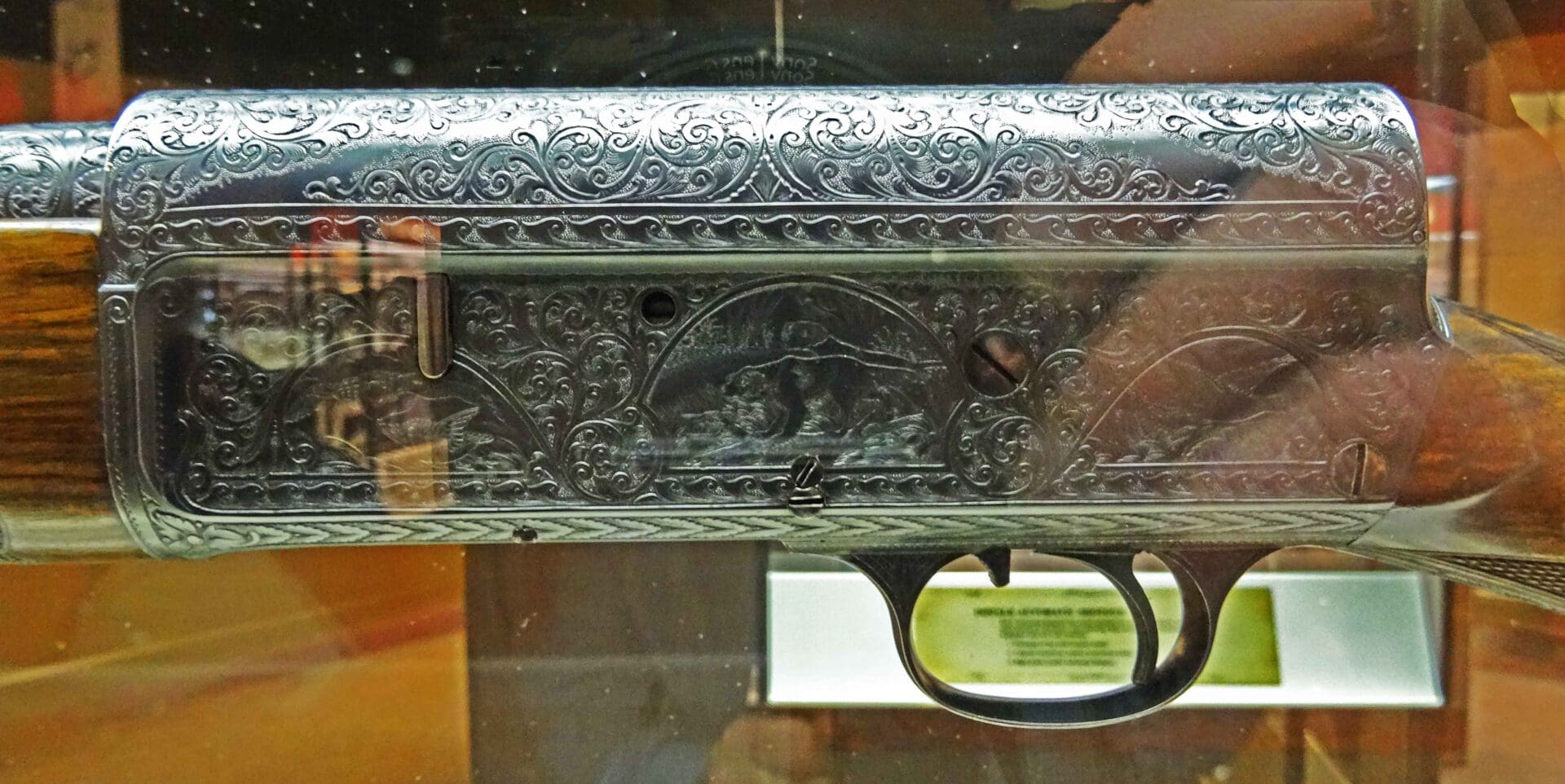
Mr. Browning showed up in Herstal unannounced. It was a cold, rainy February day, and Browning hoped that the weather was not a harbinger of what was ahead. Fortunately, his concerns proved unfounded.
The FN executives welcomed Mr. Browning with open arms. After all, Browning was largely responsible for the factory’s production lines being busy profitable. In fact, Mr. Browning was completely unaware of the degree to which his little .32 ACP pistol, the Model 1899, had transformed FN’s fortunes.
Having excellent engineering backgrounds, FN executives immediately saw the genius in the Auto-5’s design that Winchester had apparently missed. Within a month, John Browning had a royalty contract, and FN owned the worldwide manufacturing and distribution rights to the Auto-5. FN also had their first customer for the Auto-5: John Browning ordered 10,000 Auto-5 shotguns for the American market, and even left a deposit for their manufacture.
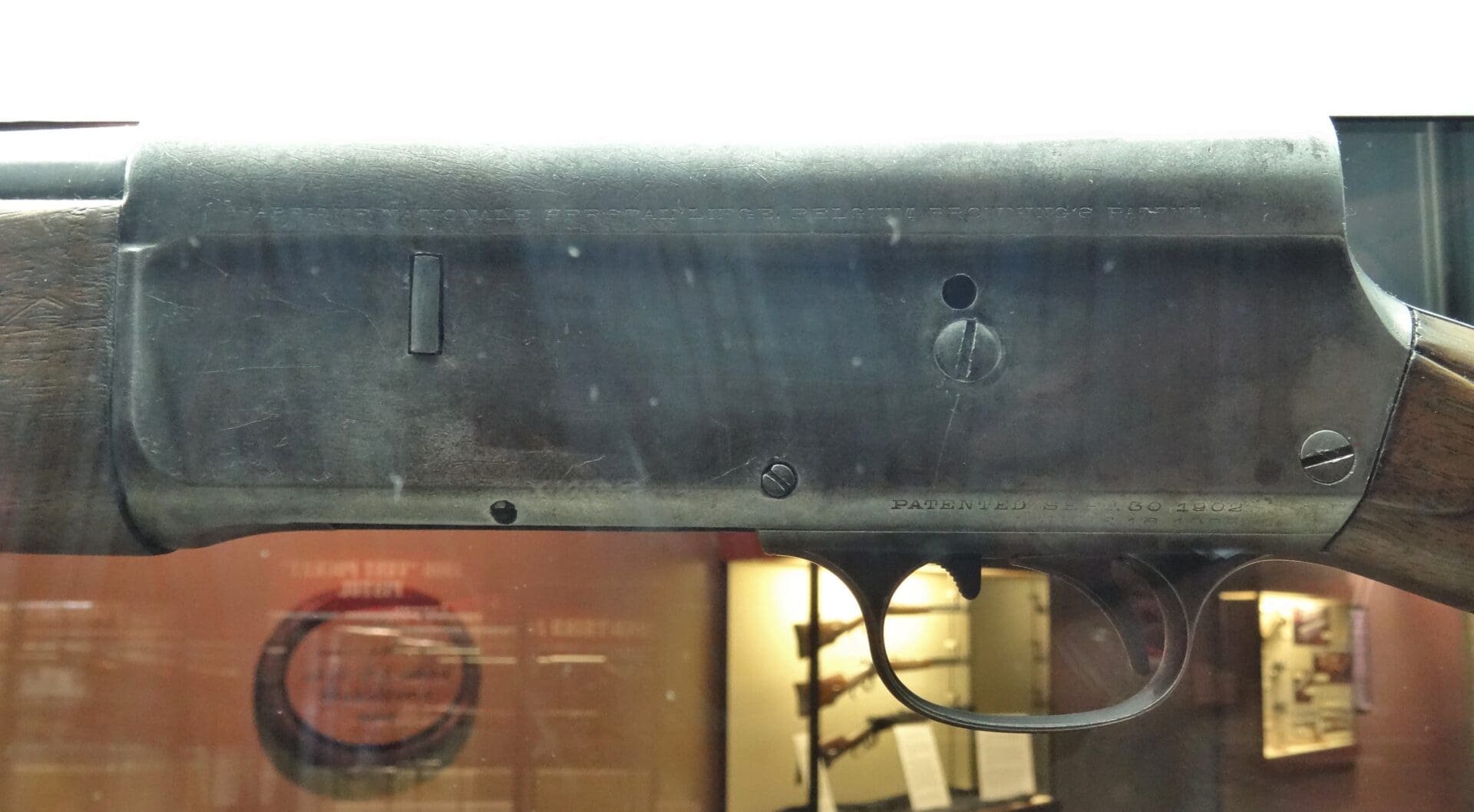
Browning spent three months in Herstal during the spring of 1902 supervising the initial pilot production of Auto-5 shotguns. He immersed himself in the culture and language of the Belgian people; by the time he left Herstal, he knew the French names for all of the shotgun and pistol parts.
He became well-known and well-loved in Herstal. His quiet, unassuming nature could be mistaken for shyness, but his ability to connect with people was uncanny. As was his respect for the workers and artisans at the factory. A combination of translators and pantomime made up for the language barrier, and the inventor was able to effectively convey the Browning ethos to the FN gunsmiths.
In both the factory and the community, he was soon known as “Le Maître,” French for “The Master.” To this day, in much of the Francophone world the term “Browning” is synonymous with “pistol,” like “Xerox” became synonymous for a “photocopy”.
So great was FN’s admiration for John Moses Browning, that in 1904, it released a portion of its worldwide exclusive rights to the Auto-5 shotgun. Freed from his contract restriction, Browning sold the U.S. manufacturing and distribution rights to Remington, which began production of the Model 11 in 1905. The Model 11, a slightly modified version of the Auto-5, would become a major seller for Big Green, with roughly 840,000 united sold, including a military contract during WWII.
For FN, the loss of the U.S. market for the Auto-5 was far eclipsed by their genuine desire to please Mr. Browning. The Belgians’ loyalty would be rewarded in 1907, when Browning granted FN the exclusive right to use his name as a trademark.
The practical effect of this contract was far-reaching: no other company would be allowed to associate their guns with the famed Browning name. Moreover, Browning continued to furnish FN some of the most successful and iconic small arms designs the world has ever seen, including:
- FN Browning Model 1903 Military Semi Auto, 9mm Browning Long (9 x 20mm)
- FN Browning Model 1905/06 Vest Pocket (.25 ACP)
- FN Browning Model 1910/1922 (.32 ACP, .380 ACP)
- FN Grand Browning (same as Colt Model 1911, .45 ACP)
- FN Browning B25 Superposed Over/Under Shotgun
- 2 prototype 9mms which would become the M1935 Browning Hi-Power
- Browning SA-22, 22LR autoloading takedown rifle.
Each of these models would be produced in large numbers, which some exceeding the one million mark. In fact, the first of John Browning’s pistols to reach sales of one million was the diminutive “Vest Pocket” .25 ACP, model, the Model 1905/06, which reached this key remarkable milestone after only seven years in production.

Other less successful models included the following:
- Browning Trombone .22LR rifle
- FN Model 1900 .35 caliber rifle (same as Remington Model 8)
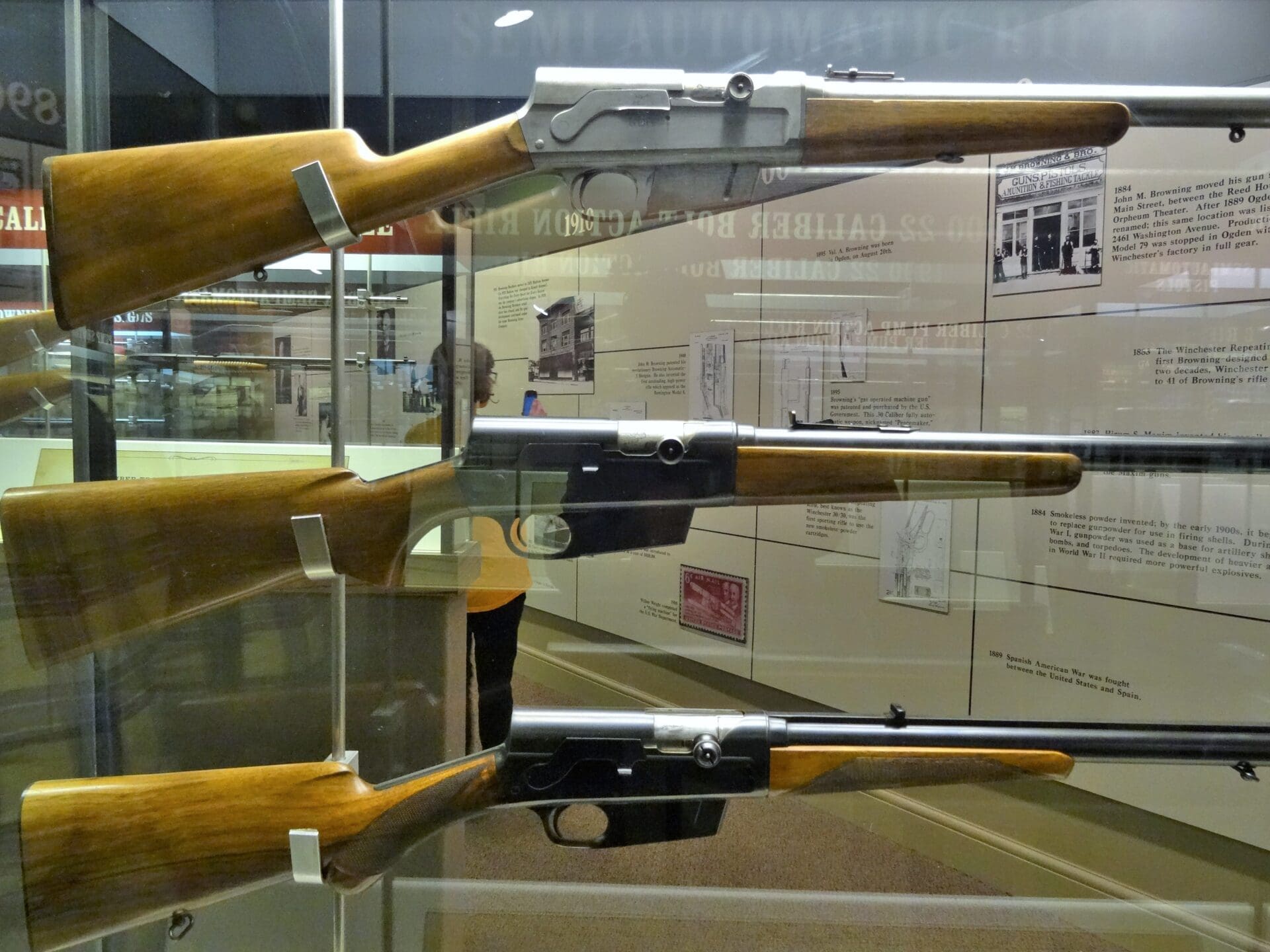
But the commercial failures were few and far between. In fact, FN firearms quickly became recognized the world over for their innovativeness, reliability, and craftsmanship.
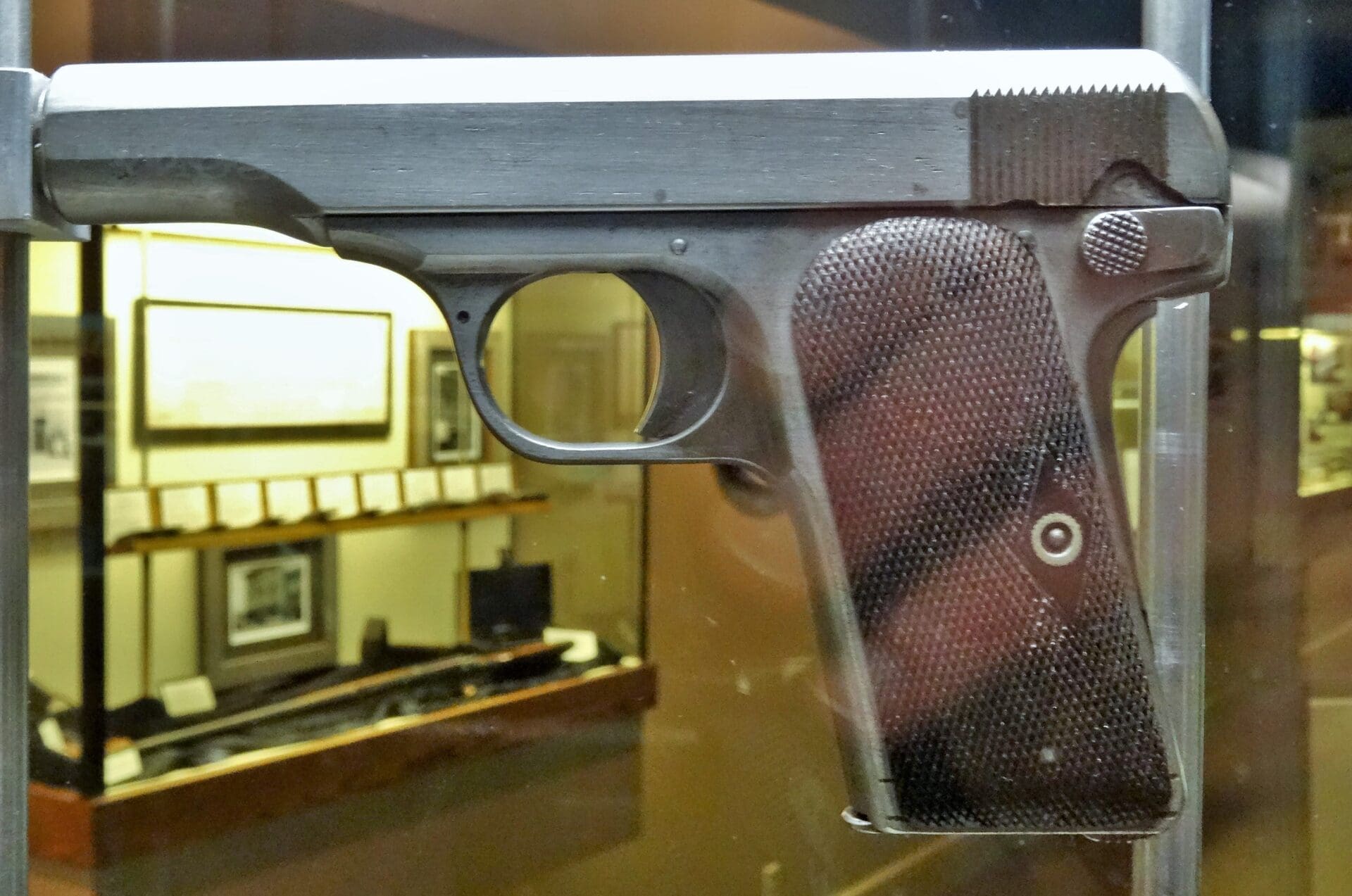
World War I, however, created a new set of challenges and setbacks for FN. A Serbian nationalist named Gavrilo Princip started the events that led to the war when he murdered Austro-Hungarian Archduke Franz Ferdinand. (Ironically, the assassin used a 1913 production FN 1910 pistol chambered in .380 Auto.). Germany soon invaded Belgium; the FN factory was occupied by the Bosch and taken out of production for four years.
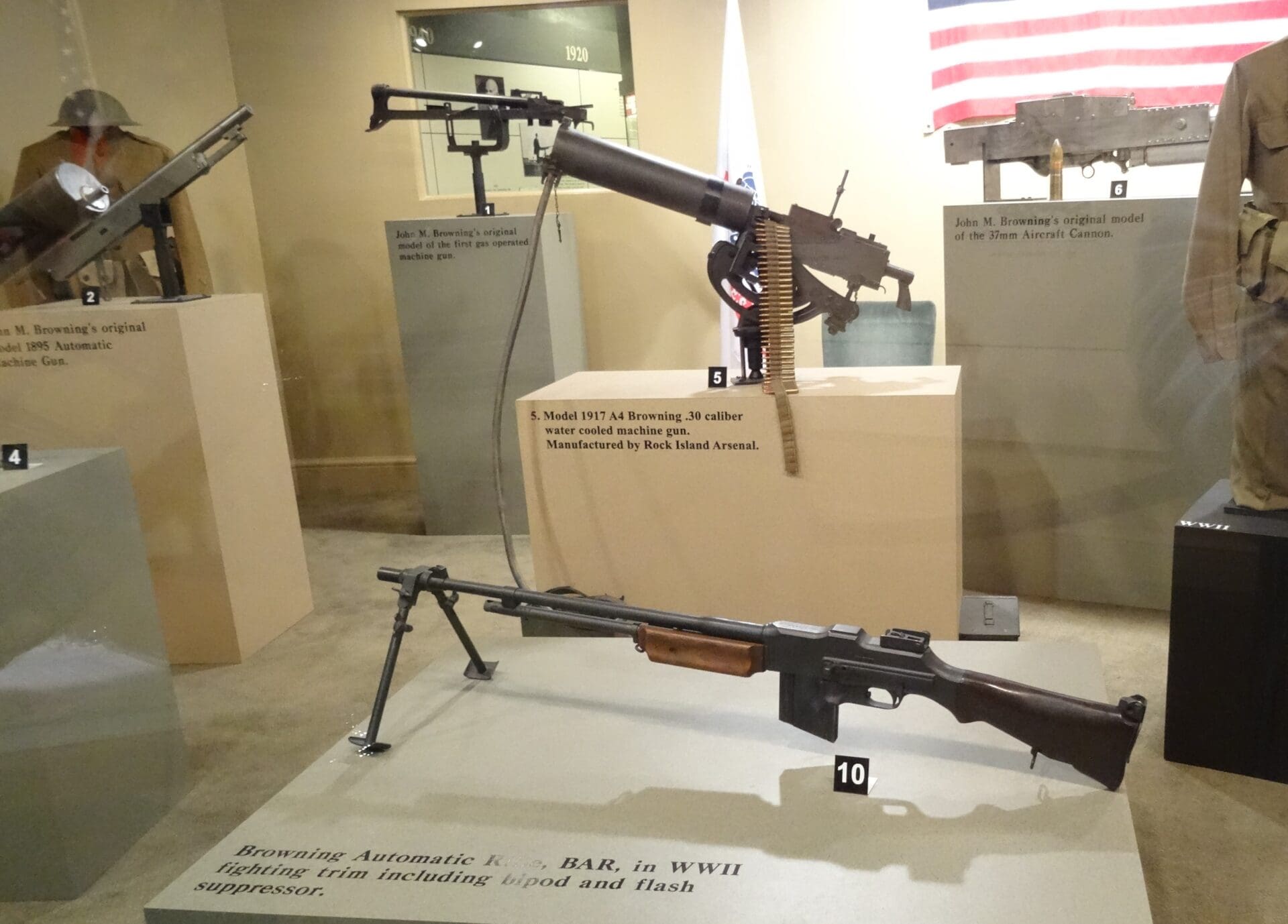
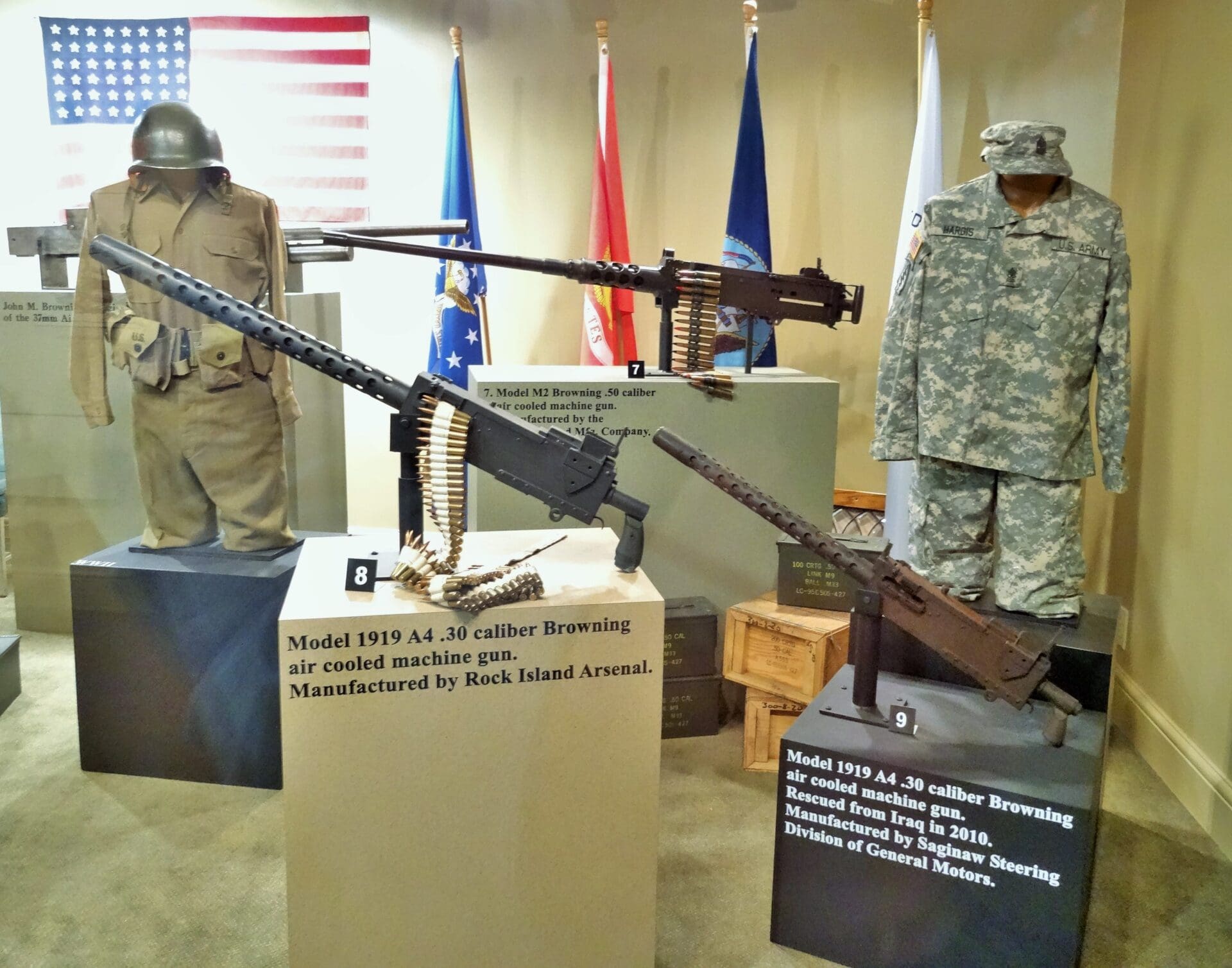
John M. Browning, on the other hand, would enter into a renaissance period back in the United States during the war years. He devoted virtually all of his free time to the patriotic duty of designing weapons of war.
His iconic designs would be used to great effect by U.S. troops for generations to come: the M2 .50 caliber “Ma Deuce” heavy machine gun, the M1918 Browning Automatic Rifle (“BAR”), the M1919 medium machine gun, and a prototype 37mm anti-aircraft cannon. John M. Browning would be paid only a small fee for these designs, but he understood that his nation’s gratitude was payment enough.
After the Great War ended, Browning returned to his true passion: sporting arms. Browning would spend his remaining years designing the iconic B25 Superposed over-under shotgun, the Colt Woodsman .22LR pistol, the .22 trombone rifle, and a pair of 9mm prototype pistols which would become the FN Browning Hi Power. All told, Browning made 61 trips to Herstal in the last 24 years of his life. Given the speed of trans-oceanic travel back in those days, those trips represented years of travel time.
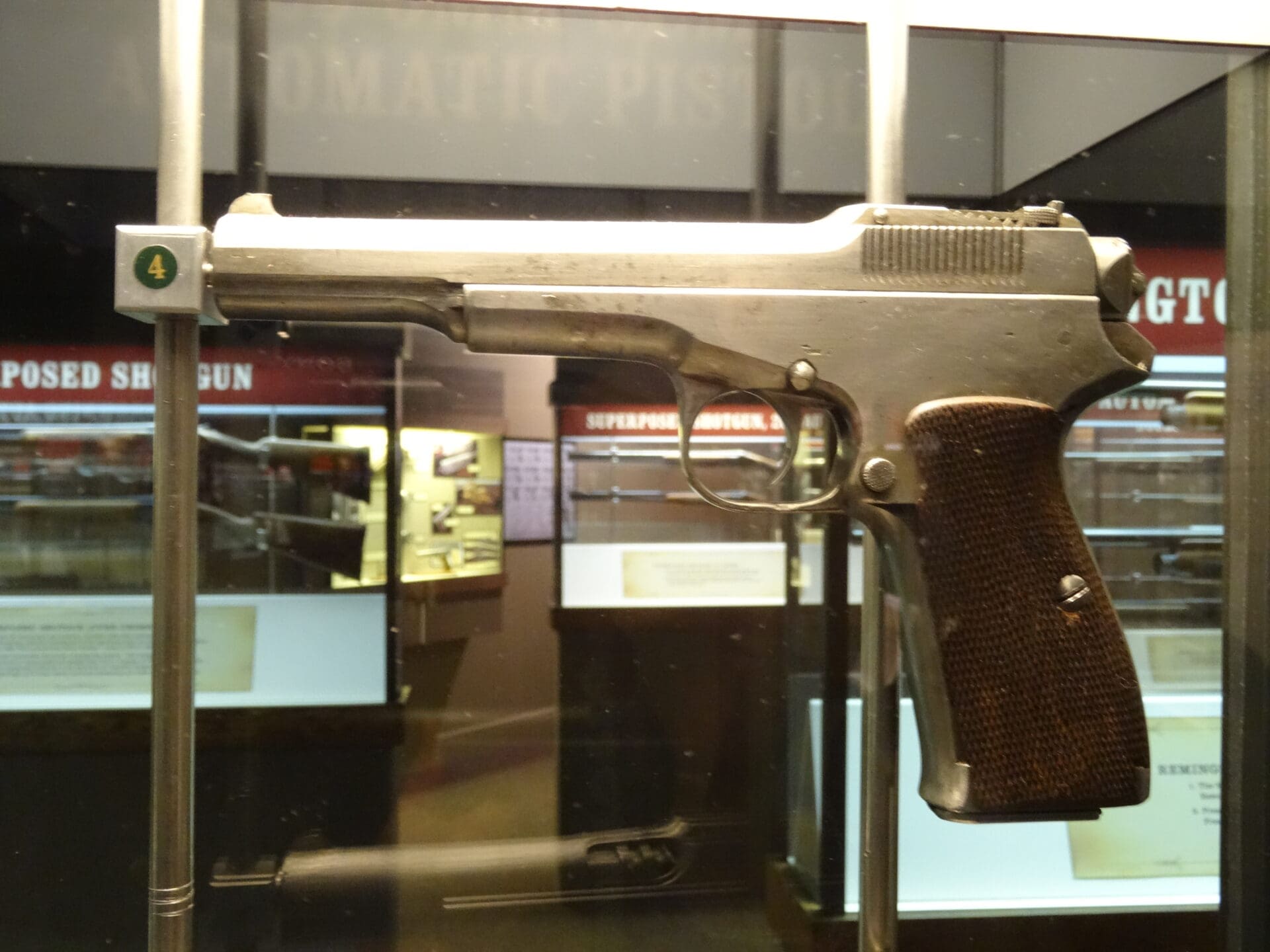
Unfortunately, the last voyage proved to be a one-way trip. John Browning became ill while on the factory floor and later died of a heart attack while working at his desk in the FN Herstal factory on November 26, 1926. His son Val Browning was at his side.
John had been complaining of chest pains for several hours and soon became light headed. Lying on a couch in Val Browning’s office, John said to Val: “Son, I wouldn’t be surprised if I am dying.” Minutes later, the old gunsmith passed away, and the world lost the greatest firearms designer it has ever seen.
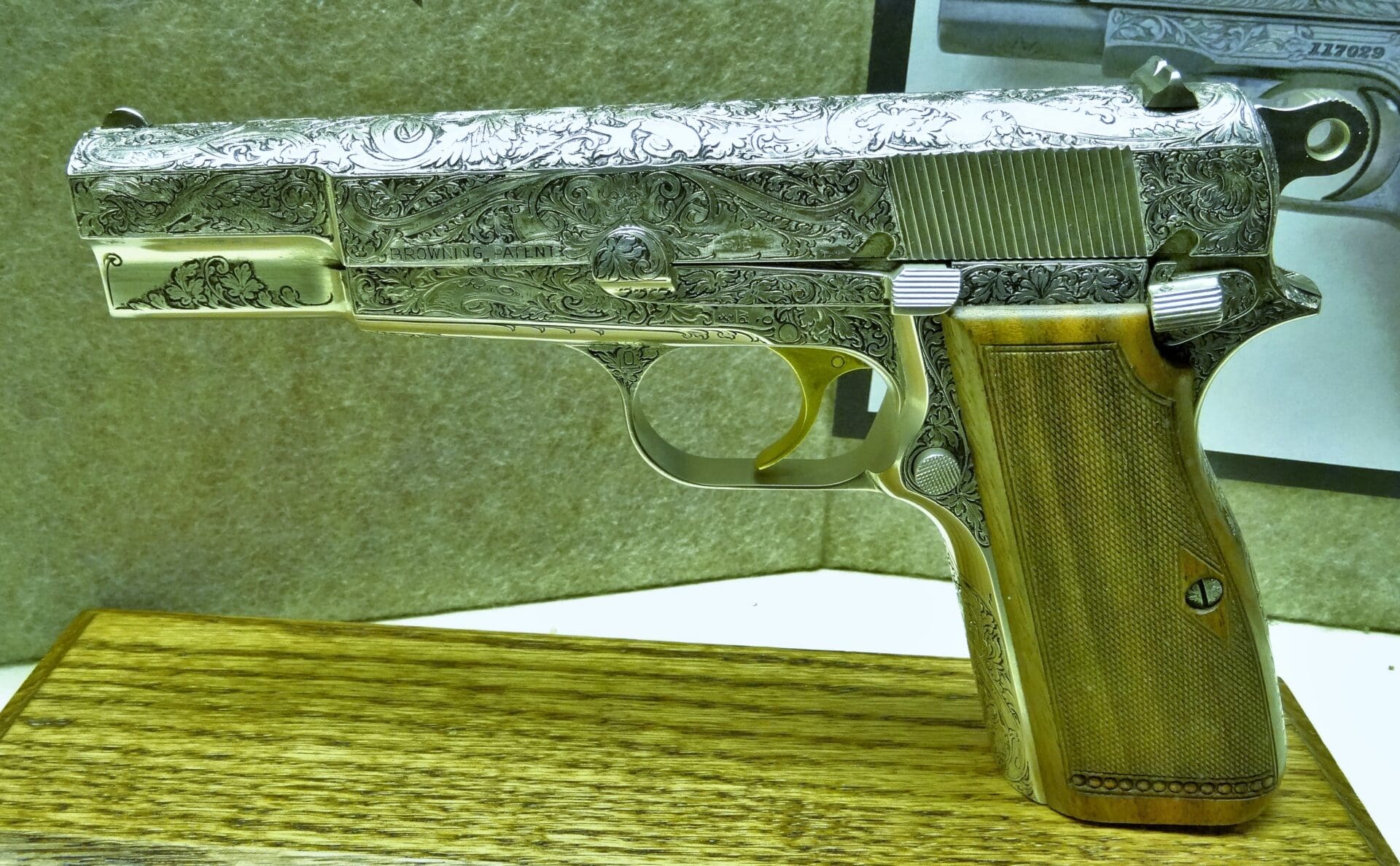
Despite the immense sadness that overtook the community in Liege, FN would continue on. Indeed, John M. Browning had left FN in a good position to prosper in the years ahead. Perhaps even more importantly than the designs themselves, Mr. Browning’s expertise had helped inspire FN’s next generation of excellent engineers, including, most notably, a gentleman by the name of Dieudonné Joseph Saive (1889–1973).
Monsieur Saive would go on to become FN’s chief weapons designer (Chef de Service), and would produce the Model 1949 (aka FN-49 or SAFN) and the iconic Fusil Automatique Léger (“Light Automatic Rifle”) aka: the FN FAL. He would also perfect the Browning Hi Power and the “Baby Browning” .25 ACP.
As a company, FN would go on to become one of the largest manufacturers of small arms in the world, and would be one of the key firms to arm the free world in the post-World War II years. FN would also buy out Browning USA in 1977, establish a U.S. manufacturing operation in Columbia, SC in 1981 (FN Manufacturing), acquire the license to produce Winchester brand firearms in 1991, and establish FNH USA in 1998.
Today, FN Herstal’s operations in the U.S. consist of Browning North America and FN America, the result of combining FN Manufacturing and FNH USA in 2014. In addition, FN America’s Columbia facility has produced firearms such as the M4 and M4A1 carbines, M16 A2, A3 and A4 rifles, M240 medium machine guns, M249 squad automatic weapons, MK 46 and MK48 light machine guns, MK 20 sniper support rifles, and the MK 19 grenade launchers.
John Moses Browning may be gone, but the legacy of his designs still lives on.








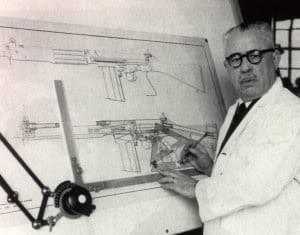






If Browning were alive today and went to make FN money the Far Right would scream he was unpatriotic and a traitor.
Not all of Brownings guns were flawless either. The BAR was never quite perfected and was noted for jamming and was quite useless in combat because it did not have a quick change barrel which was often burnt out in minutes.
The FN High Power is often credited to Browning by the Americans when in reality Browning had little to do with its invention. The original high power pistol was a huge ungainly striker fired gun which was entirely scraped out when Saive invented his own version of a high capacity 9mm military pistol.
Its one of history’s ironies that Browning chambered the 1911 for a .38 caliber cartridge not the .45 acp. The .45 acp caliber was demanded by the U,S. Military after they had been hoodwinked by the charlatan Col. Thompson who covered up the testing failures of the .44 and .45 cal pistols he tested in the Chicago Stock Yard tests. In fact he really found out that calibers like the 9mm and even the .30 Luger killed as well if not better, a fact he concealed from the military.
Brownings discontinuing the High Power Pistol was a colossal marketing blunder and other companies jumped in very quickly to clone it and are selling them like hot cakes.
Who put the turd in the soup?
Unfortunately, Southern, TTAG apparently welcomes turds. Even turds with ZERO knowledge of firearms (or, in dacian’s case, ANYTHING). Again, with dacian, since the uneducated, ignorant idiot won’t go away, the only solution is to mock him, without mercy. He knows he’s a liar, and an ignoranus, but like a buoyant turd, just keeps floating back up. Ignore him (he WILL NOT go away) or make sport of him. I suppose, at some level, we should give thanks for such useless trolls. If they were competent, they might even cause some trouble.
dacian the demented dips***,
Thanks for once again exposing us to your ignorance, lack of knowledge of firearms and firearms history, and insipid political bias. Now, go play in the traffic, you uneducated dolt.
Great article.
Thanks for the article. Really enjoyed it!
Happy Birthday!!! JMB
This changes my plans. Going to do a little ballistic celebrating!
This is great. I’ve read a similar history before, but always great to get a reminder. Happy birthday, Saint John Moses Browning.
I need to dig out my Hi-Power to once again gaze in silent appreciation.
If I had to remove every firearm from my safes that John Browning designed, it would be a hit.
I you pulled all that borrowed from his designs that won’t leave much at all.
As involved with guns as he was, he apparently didn’t know enough to keep his cotton pickin’ finger off the trigger until ready to shoot🙄
Love my Brownings. My Dad left me his 16 auto, one of those Remington Model 11s on the Browning patent, pre-WWII, a sweeter shooter never dropped a squirrel out of a treetop. When we were boys, we’d toss a quart beer bottle in the air, my ol man would bust it and two pieces before they hit the ground. He was lethal with that shotgun.
JMB was a genius.
The first shotgunm I fired was an A5, shot at a clam shell, low brass loads wouldn’t cycle.
There is a piston inside the gun that encircles the magazine tube. To fire low brass you have to reverse this piston.
Also most people do not know that this piston will rust itself to the magazine tube and since most gun owners do not know this and therefore do not oil or grease this magazine tube this also can cause the piston to hang up and jam the gun even it its turned in the right direction.
I was an old man by the time I got the itch to buy a Sweet 16 A-5 and found out what a great gun it was to hunt with. It does kick like a mule because its long recoil operated but when you are out hunting you seldom fire more that a few rounds.
One thing you must do if you own any A-5 (originals) is that you must tighten the barrel/magazine tube nut tight because if it comes lose it can cause the forearm to crack, that is why the last of the original A-5’s had epoxy put into the forearm.
If Ohio had more wild small game like it did back in the 60’s I would be tempted to try out the modern short recoil Sweet 16 A-5. Of course these days it will cost you plenty.
I bought one of the last (original) A-5’s made in Sweet 16 (Japanese) that had the screw in factory chokes. It made a great pheasant, quail and chukar gun with its 26″ barrel. And no it was not cheap, I paid through the nose to get it about 12 years ago but it was worth every penny I paid for it and now its worth way more than what I originally paid for it proving that when you buy a quality gun even if you originally paid too much it soon skyrockets in value.
Why do I hunt with the 16 gauge??? Its just nostalgia, I am not going to tell you its better than a 12 gauge or a 3 inch 20 gauge but I hunted with a couple of 16 gauge guns in the 1960’s, a Savage 220C and a Savage Fox B double barrel when I was a kid. No one went o school the first day of pheasant season, no one.
Here is a strange story. I went a couple of years ago to a hunting preserve and the owner asked me if I remembered how different the burnt shotshell powder smelled back in the day. I told him, “Now that you mentioned it the smell of the burnt powder was much stronger and very different than todays shotgun shells”. He told me that the ammo companies do not put in a certain chemical that they used to use but off hand I no longer can recall the name of the chemical that he told me they used to use.
I still have squirreled away some collector shotshell ammo in the paper boxes, some are paper shells and some are original plastic that date from the 40’s, 50’s and 60’s. I cannot bring myself to ever shoot these collector shells, too many memories of long gone hunting buddies and hunting dogs.
One day long ago my brother brought home a weird clay target thrower that held up to 4 clay birds at a time and you could throw all of them at once. You held it with both your hands by a long broom type handle. If I remember correctly it might have been made by Mossberg. One weekend my close friend and next street over neighbor and my brother climbed a high hill and threw clay birds from it because they sailed a long way down the hill. It was great fun trying to hit them. Now I am the only one still left alive that remembers that nostalgic fun day of long ago. The hill now has been eaten up by suburban sprawl and the giant Oak tree on the hill which was at least 175 years old cut down long ago. Another tree a couple of miles away was documented to have been alive during the early 1800’s but the greedy real estate builders cut it down as well.
The abandoned farmers field beneath the hill has succumbed to the greenhouse effect and the open fields are now not open anymore rather they are choked with brush so thick you cannot even walk through the fields any more. I suppose Briar Rabbit is now safe from the hawks and the human hunters (who are not allowed to hunt there anymore anyway). In truth we were not allowed to hunt there back in the day either because technically it was in the city limits but being kids we always ran faster than the cops could and back then they did not gun you down in a pool of blood if they could not catch you. I think they had more of a laugh over it than we did.
Gone also are the spring peeper frogs. In the spring they were so loud that the first time I remember hearing them I decided as a young lad to find out where their lair was. I thought that since their mating calls were so loud they must not be too far off. Boy was I wrong I walked a mile before I found them and back then they were in this big swap by the thousands and thousands. Today there is not one left alive in that swamp because even the swamp is not there anymore. Gone because of the global warming I guess.
I remember as a kid before we had real guns we had BB guns. One spring day we decided to go one “The Great Bug Safari”. I cut up a dress my Mom had that looked like the pattern you see on a leopard and put a ring of it around my hat to look like an African big game guide hat. Then the old gang of ours all headed for the swamp to shoot dragon flies on the wing. It was quite a challenge with the smooth bore Daisy model 50 pump BB guns and lever action Daisy Red Ryder guns we had.
It isn’t a piston, it is a friction ring. There is no piston on the A5, it is a long-recoiling action.
Here’s the information on setting the friction ring for the A5, directly from Browning:
https://www.browning.com/support/faq/rings-auto-5.html
The best place to find the instructions for the older Browning guns is in the Brownells’ “Green Book,” which reproduces the older Browning instruction manuals:
https://www.brownells.com/gunsmith-tools-supplies/books-amp-videos/books/gun-parts-reference/encyclopedia-of-modern-firearms-hardcover-edition-prod1691.aspx
As for lubrication, you want to be careful about over-lubing the friction ring. The point of the friction ring is to provide friction and slow down the recoiling of the barrel into the action. On the A5, “too much friction” (where the action will short-cycle) is a problem you can solve without damage. Too little friction will allow the breech block to slam into the inside of the receiver.
The Remington M11 had a fiber washer inside the receiver to absorb some of this if someone got the friction ring setting incorrect (or allowed a magnum load to get into a gun set up for light loads), but the Belgian A5 didn’t have that buffer.
In other words. dacian hasn’t clue as to what he’s talking about.
But we know that. And he is not nearly as old as he claims. More lies.
to Jethro the Janitor, once again you prove your low intellect and lack of reading comprehension. Its not a question of “not” lubing the friction ring rather its a question of how much to lube it and what lube to use.
I have seen some friction rings worn and very loose and others overly tight when new and some not tight enough even when new. The point being made is that if you have problems with the friction ring you have to analyze the problem first and the first thing you look for is the position of the ring in regards to which way it is turned and if it is rusted. No lube means it will rust sure as hell and it doesn’t take long for it to happen.
Jethro since you are too cheap and stingy to ever own one of these guns for you its not a problem.
Does anyone else find dacian’s pretensions at firearms knowledge or experience hilarious? He apparently believes he can reinforce his transparent lies with a little Google research . . . which he then inevitably misunderstands/misinterprets.
dacian the demented dips***, tell us again how all your “gun guy” pals seem to have frequent negligent discharges, even though they are allegedly “gun people”???
Fat, drunk, and stupid is no way to go through life, boy!!
You were claiming it was a piston when a man with real knowledge corrected you, dacian. Barking at me for pointing out you don’t have a clue just confirms, that indeed, you do not have a clue.
Thanks for the links. Inherited a 1956 Auto-5 Light Twelve that hasn’t been fired in probably 25 years, when the 2 or 3 light skeet shells I test-fired it with wouldn’t fully cycle it. That was before I learned about the friction rings. One of these days I’m going to tune it up so it will cycle light loads for very occasional nostalgic use.
For now, I occasionally remove the forestock and barrel and oil it inside and out, and it goes back to sleeping in the safe. Unfortunately, my long-deceased grandfather put a Poly Choke on it, which uglied it up a bit, but it’s beautiful otherwise.
The peepers left Ohio for Tennessee, they didn’t like the neighborhood.
“I suppose Briar Rabbit is now safe”
It’s Br’er Rabbit or Brer Rabbit, an abbreviation for Brother Rabbit.
Joe, excellent article.
I’d like to advise people that your photos came from the excellent Browning Firearms Museum in Ogden, UT. This is actually a museum that is one of several museums in the same building/station. There’s a rail museum, early car museum, and the Browning museum, all in the same building/area. If you’re visiting with a family who might not all be into the Browning exhibits, you’re in luck – the other members of the family can peel off and visit the train/car exhibits.
Here’s more info:
https://www.ogdencity.com/1522/Exhibitions
If you visit the Browning museum, look for the little room off the corner of the main exhibits which is a collection of the tools and machines JMB used in making his guns/prototypes. You’ll see that he didn’t have much in the way of machine tooling… yet he made lots of prototype guns that worked.
I have family in Salt lake city. I will make it to that museum one day.
I hope that this was just a typo. John Moses Browning was born January, 23 1855 in Ogden Utah.
JMB was undoubtedly one of the greatest, if not the greatest, firearm designer in history. I personally own several of his designs, and they were great in their time, and remain very functional (even if outdated – I love my 1911, but you can’t deny it’s an outdated design). Browning’s biggest problem was that his imagination could create designs that the materials and manufacturing of his day simply couldn’t produce properly. It would be interesting to see what JMB would come up with if he had modern materials and modern precision manufacturing at his service. The man was a genius, and should be recognized as such.
I would say that one of the issues for JMB’s designs is that he had only rudimentary metallurgy to work with – eg, carbon steel, and basic chrome-moly alloys.
One of JMB’s design practices was to use more parts in sliding/rotating/pivoting/impacting applications than strictly necessary, to spread wear across more than a couple of parts to increase longevity.
If JMB had our modern metallurgy, he could have reduced parts counts and depending on his materials being of better, more consistent heat treatment and resulting hardness/quality.
Dyspeptic,
All of that, and the availability of tighter, more consistent tolerances. Like I said, I would love to see what he would have designed if he had access to modern materials and precision manufacturing. Love my 1911, but my Kimber is OBJECTIVELY a better firearm than the original Colt 1911 – better materials, tighter tolerances, better accuracy (and my original worry about the Kimber’s reputation for being picky about ammunition has proven not to be true; mine will eat anything I feed it, and has had a jam or failure to feed exactly twice in about 10,000 rounds). So even his original designs just work better with modern materials/manufacturing
grat article Joe, and a very concise description of how and why the JMB/FN relationship developed and prospered. Winchester and Colt really screw the pooch in their relationship with JMB.
As others have noted, if I were to remove every Firearm from my small collection that was either directly or indirectly linked to a JMB design, about 2/3rds of my guns would be gone.
That’s a lot of influence.
The early pre-WW2 civilian Colt 1911s were/are still unparalleled in parts fit and in polished finish.
God bless John Moses Browning!
St. JMB is THE Gun-God. I have several examples of his designs in my selection, all of them excellently-functioning firearms in spite of the age of the designs. Time and technology marches on, and OK they arent Glocks- but that’s not necessarily a BAD thing! Tho I generally pack Glocks nowadays, I maintain proficiency with the Browning-designed pistols and would not be “under-gunned” if they were all I had. John Moses was singularly blessed with talent and skill and left us too soon!